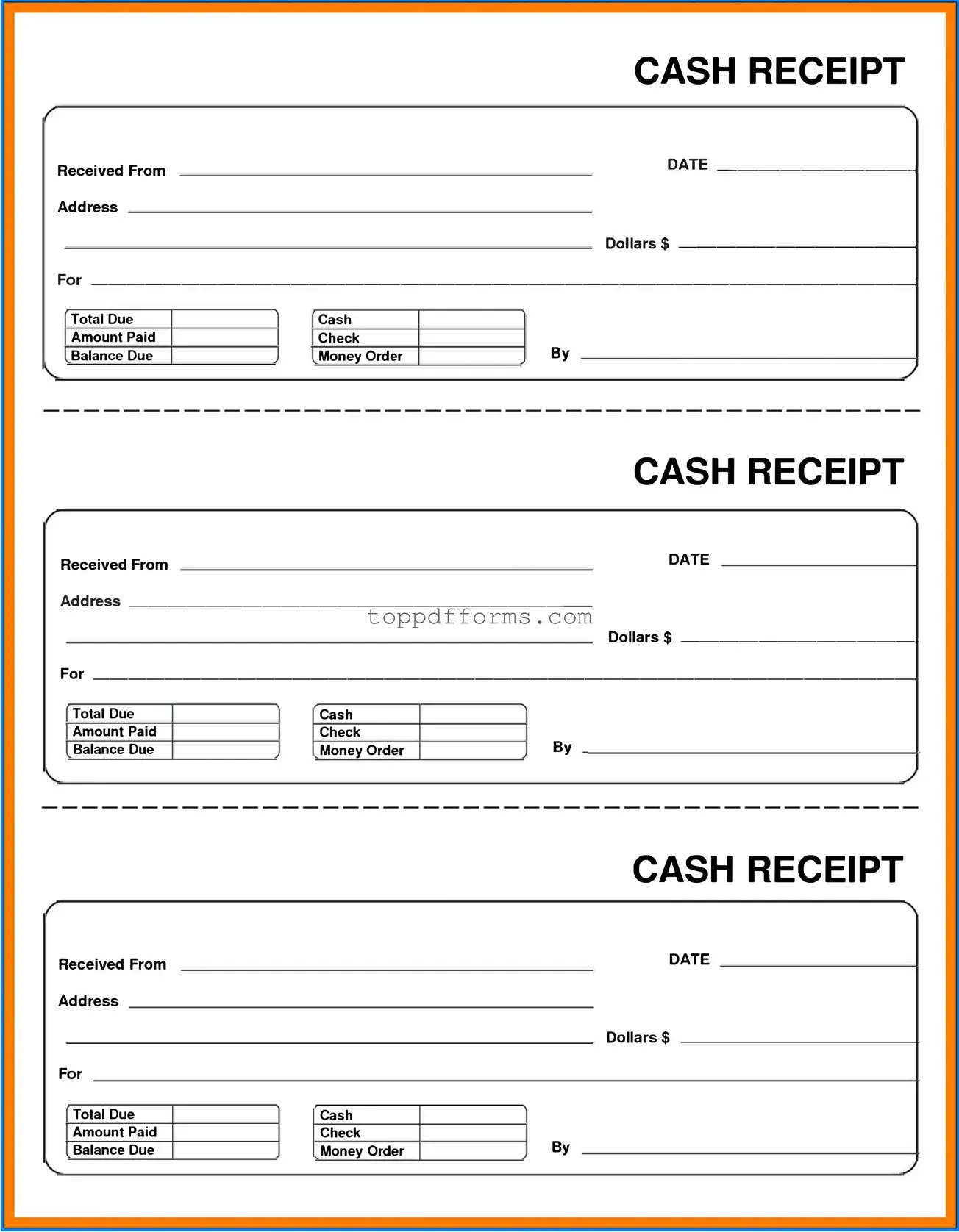What is a Cash Receipt form?
A Cash Receipt form is a document used to record the receipt of cash payments. It serves as proof that a transaction has occurred, detailing the amount received, the date of the transaction, and the purpose of the payment. This form is essential for both businesses and individuals to maintain accurate financial records.
Why is a Cash Receipt form important?
The Cash Receipt form is crucial for several reasons. First, it provides a clear record of cash transactions, which helps in tracking income and expenses. Second, it can be used for auditing purposes, ensuring that all cash inflows are accounted for. Lastly, it protects both the payer and the recipient by offering a tangible record of the transaction.
What information should be included on a Cash Receipt form?
A Cash Receipt form should include the following key information: the date of the transaction, the name of the payer, the amount received, the method of payment (cash, check, etc.), a description of the transaction, and the signature of the person receiving the payment. Including these details helps to ensure clarity and accuracy.
Who should use a Cash Receipt form?
Any individual or business that receives cash payments should utilize a Cash Receipt form. This includes retail stores, service providers, and non-profit organizations. Even personal transactions, such as renting out property or selling items, can benefit from using this form to document cash exchanges.
How can I create a Cash Receipt form?
Creating a Cash Receipt form can be straightforward. You can design one using a word processing program or spreadsheet software. Alternatively, many templates are available online that you can customize to fit your needs. Ensure that the template includes all necessary fields for the transaction details.
Is a Cash Receipt form legally binding?
While a Cash Receipt form is not a legally binding contract, it does serve as an important piece of evidence in the event of a dispute. It shows that a transaction took place and can help clarify any misunderstandings between parties. For this reason, it is wise to keep these forms organized and accessible.
How long should I keep Cash Receipt forms?
It's recommended to keep Cash Receipt forms for at least three to seven years, depending on your local tax laws and business requirements. Retaining these records for an extended period can be beneficial for tax audits or financial reviews. Always check with a financial advisor for specific retention guidelines relevant to your situation.
